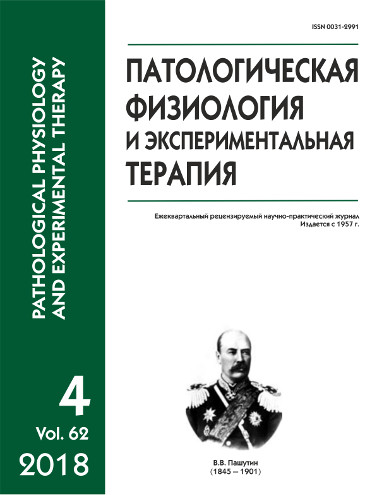Platelet apoptosis and phenotype in patients with acute ischemic stroke
Abstract
Aim. To develop of knowledge of platelet apoptosis and phenotype in patients with acute ischemic stroke and to study the prognostic value of some membrane-bound proteins. Method. The study included 18 patients aged 59—78 with acute ischemic stroke. Platelet were isolated by immonomagnetic separation within the first 24 hours and at 7 days of ischemic stroke. The expression of surface antigens was measured using monoclonal antibodies. For detection of phosphatidylserine (PS) externalization platelets were incubated with Annexin V. The mitochondrial membrane potential (MMP) was measured using JC-1 during platelets apoptosis. Immediately after the incubation, platelets were analyzed by flow cytometry. Results. On day 1 of stroke, the expression of CD62p (P-selectin) was higher than in healthy subjects (18.3% vs. 4.1%, respectively, p<0.05). The PS externalization on platelets from patients with stroke was significantly higher than in healthy subjects (20.6% vs. 3.2%, respectively, p<0.01). A decrease in MMP to 70% was observed in platelets from patients with stroke compared to 94% in the control group (p<0.05). Conclusion. Therefore, acute ischemic stroke was associated with the following platelet abnormalities: increased PS expression and declined MMP in parallel with increased P-selectin expression, which reflects platelet activation. Further studies of platelet phenotype and apoptosis biomarkers will provide a deeper insight into the pathogenetic role of platelets in ischemic stroke and contribute to the development of methods for monitoring effects of antiplatelet therapy.






